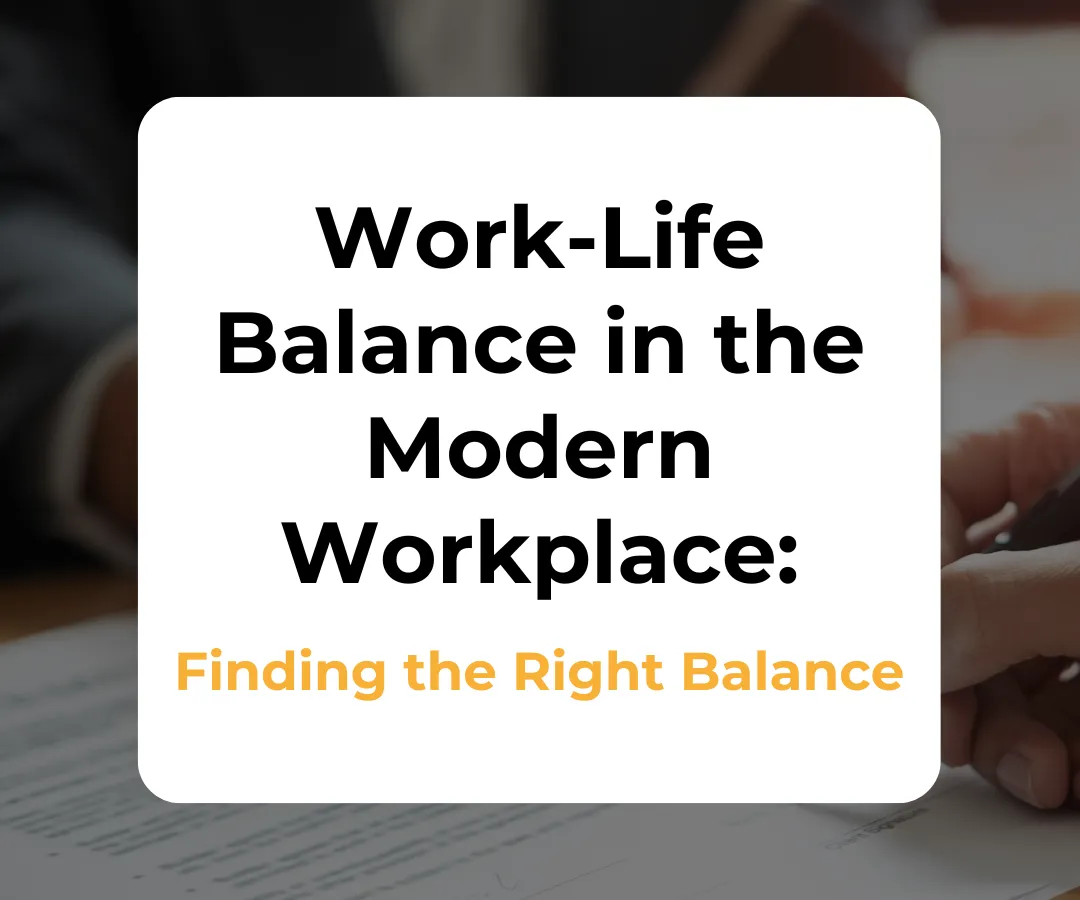Mon - Fri: 9:00 - 17:30
Legacy Strategies
Blogs & Articles
Stay up to date with the latest news
in Recruitment and Human Resources
Legacy Strategies
Blogs & Articles
Stay up to date with the latest news in Recruitment and Human Resources
At Legacy Strategies, we understand that the people behind any organisation are its most valuable asset. That's why we're excited to share our insights, expertise, and industry knowledge with you through our blogs.
In this space, you can find a wealth of information on the latest trends, best practices and innovative strategies that shape the Recruitment and HR landscape. Whether you're a HR professional, a hiring manager, a job seeker, or just someone interested in the ever-evolving world of talent acquisition and management, our blog is your go-to resource.
Stay tuned for regular updates as we explore the cutting-edge developments in HR technology, diversity and inclusion, talent acquisition strategies, and much more. We're here to empower you with knowledge that can drive your organisation's success!
At Legacy Strategies, we understand that the people behind any organisation are its most valuable asset. That's why we're excited to share our insights, expertise, and industry knowledge with you through our blogs.
In this space, you can find a wealth of information on the latest trends, best practices and innovative strategies that shape the Recruitment and HR landscape. Whether you're a HR professional, a hiring manager, a job seeker, or just someone interested in the ever-evolving world of talent acquisition and management, our blog is your go-to resource.
Stay tuned for regular updates as we explore the cutting-edge developments in HR technology, diversity and inclusion, talent acquisition strategies, and much more. We're here to empower you with knowledge that can drive your organisation's success!

Navigating Work-Life Balance in the Modern Workplace

In today's fast-paced and constantly connected world, achieving work-life balance has become a crucial yet challenging goal for many professionals. As the lines between work and personal life continue to blur, understanding and implementing effective strategies for work-life balance is more important than ever. This blog post explores the concept of work-life balance, why it matters, and practical tips to help both employers and employees foster a healthier, more balanced lifestyle.
What is Work-Life Balance?
Work-life balance refers to the equilibrium between professional responsibilities and personal life activities. It involves managing work commitments while also having the time and energy to engage in personal interests, family activities, and self-care. The concept is not about splitting time equally between work and personal life but about finding a sustainable balance that suits individual needs and circumstances.
Why is Work-Life Balance Important?
Mental and Physical Health: A balanced lifestyle helps reduce stress, prevent burnout, and improve overall well-being. Chronic stress from overwork can lead to various health issues, including anxiety, depression, and physical ailments.
Increased Productivity: Employees who maintain a healthy work-life balance are often more productive and focused during work hours. They are less likely to experience burnout and more likely to maintain high levels of motivation and creativity.
Employee Retention and Satisfaction: Companies that promote work-life balance tend to have higher employee satisfaction and retention rates. Employees feel valued and supported, leading to increased loyalty and engagement.
Better Relationships: Maintaining a balance allows individuals to spend quality time with family and friends, nurturing important relationships that contribute to emotional well-being.
Challenges to Achieving Work-Life Balance
Despite its importance, achieving work-life balance can be challenging due to various factors:
Technological Connectivity: The ability to work from anywhere, facilitated by smartphones and laptops, can make it difficult to disconnect from work.
High Work Demands: Some industries and roles inherently involve high demands and long hours, making balance more challenging.
Cultural Expectations: Workplace cultures that prioritise long hours over results can pressure employees to overwork, hindering balance.
Strategies for Promoting Work-Life Balance
For Employers:
Flexible Working Hours: Offering flexible schedules allows employees to manage work around personal commitments, reducing stress and improving job satisfaction.
Remote Work Options: Providing the option to work from home can save commute time and offer a more comfortable working environment, contributing to better work-life integration.
Encourage Time Off: Promote the use of holiday days and encourage employees to take regular breaks to recharge.
For Employees:
Set Boundaries: Clearly define work hours and personal time. Resist the urge to check emails or take work calls outside of these hours.
Prioritise Tasks: Focus on high-impact tasks during work hours and delegate or delay less urgent tasks. This helps manage workload and reduces feelings of being overwhelmed.
Engage in Self-Care: Regular exercise, sufficient sleep, and hobbies are vital for maintaining mental and physical health. Make time for these activities to recharge and maintain energy levels.
Communicate Needs: Open communication with employers and family members about work-life balance needs can lead to more supportive environments at work and home.
What are the Effects of Work-Life Balance on Mental Health?
Having a mental health first aider in a workplace or community offers numerous benefits. They provide immediate support to individuals experiencing mental health issues, helping to de-escalate situations and reduce distress. Mental health first aiders are trained to recognize early signs of mental health conditions, enabling timely intervention and referral to professional resources. This support can prevent situations from worsening and reduce the stigma associated with seeking help. Additionally, their presence promotes a culture of openness and understanding about mental health, encouraging more people to discuss and address their concerns. This proactive approach can lead to improved overall mental well-being and productivity, as well as a more supportive and inclusive environment.
Mental health first aiders support work-life balance by providing immediate help for mental health issues, reducing stress, and encouraging a healthy approach to managing work and personal life. Their presence promotes understanding of mental well-being, encouraging employees to prioritise their mental health and seek a better balance. Additionally, they advocate for workplace policies that support flexibility and a positive work culture, benefiting both individual well-being and overall workplace morale.
Conclusion
Work-life balance is not a one-size-fits-all solution but a personal and evolving journey. By prioritising balance, employers can foster a more productive, satisfied, and loyal workforce, while employees can enjoy a more fulfilling and healthier life. As the workplace continues to evolve, embracing flexible and supportive practices will be key to achieving and maintaining work-life balance in the modern world.
Learn more on The School of Life's YouTube video!
Want to learn more about implementing Work-Life Balance into your organisation? Contact Us!
📞 01702 540145
Useful sources and information

Navigating Work-Life Balance in the Modern Workplace

In today's fast-paced and constantly connected world, achieving work-life balance has become a crucial yet challenging goal for many professionals. As the lines between work and personal life continue to blur, understanding and implementing effective strategies for work-life balance is more important than ever. This blog post explores the concept of work-life balance, why it matters, and practical tips to help both employers and employees foster a healthier, more balanced lifestyle.
What is Work-Life Balance?
Work-life balance refers to the equilibrium between professional responsibilities and personal life activities. It involves managing work commitments while also having the time and energy to engage in personal interests, family activities, and self-care. The concept is not about splitting time equally between work and personal life but about finding a sustainable balance that suits individual needs and circumstances.
Why is Work-Life Balance Important?
Mental and Physical Health: A balanced lifestyle helps reduce stress, prevent burnout, and improve overall well-being. Chronic stress from overwork can lead to various health issues, including anxiety, depression, and physical ailments.
Increased Productivity: Employees who maintain a healthy work-life balance are often more productive and focused during work hours. They are less likely to experience burnout and more likely to maintain high levels of motivation and creativity.
Employee Retention and Satisfaction: Companies that promote work-life balance tend to have higher employee satisfaction and retention rates. Employees feel valued and supported, leading to increased loyalty and engagement.
Better Relationships: Maintaining a balance allows individuals to spend quality time with family and friends, nurturing important relationships that contribute to emotional well-being.
Challenges to Achieving Work-Life Balance
Despite its importance, achieving work-life balance can be challenging due to various factors:
Technological Connectivity: The ability to work from anywhere, facilitated by smartphones and laptops, can make it difficult to disconnect from work.
High Work Demands: Some industries and roles inherently involve high demands and long hours, making balance more challenging.
Cultural Expectations: Workplace cultures that prioritise long hours over results can pressure employees to overwork, hindering balance.
Strategies for Promoting Work-Life Balance
For Employers:
Flexible Working Hours: Offering flexible schedules allows employees to manage work around personal commitments, reducing stress and improving job satisfaction.
Remote Work Options: Providing the option to work from home can save commute time and offer a more comfortable working environment, contributing to better work-life integration.
Encourage Time Off: Promote the use of holiday days and encourage employees to take regular breaks to recharge.
For Employees:
Set Boundaries: Clearly define work hours and personal time. Resist the urge to check emails or take work calls outside of these hours.
Prioritise Tasks: Focus on high-impact tasks during work hours and delegate or delay less urgent tasks. This helps manage workload and reduces feelings of being overwhelmed.
Engage in Self-Care: Regular exercise, sufficient sleep, and hobbies are vital for maintaining mental and physical health. Make time for these activities to recharge and maintain energy levels.
Communicate Needs: Open communication with employers and family members about work-life balance needs can lead to more supportive environments at work and home.
What are the Effects of Work-Life Balance on Mental Health?
Having a mental health first aider in a workplace or community offers numerous benefits. They provide immediate support to individuals experiencing mental health issues, helping to de-escalate situations and reduce distress. Mental health first aiders are trained to recognize early signs of mental health conditions, enabling timely intervention and referral to professional resources. This support can prevent situations from worsening and reduce the stigma associated with seeking help. Additionally, their presence promotes a culture of openness and understanding about mental health, encouraging more people to discuss and address their concerns. This proactive approach can lead to improved overall mental well-being and productivity, as well as a more supportive and inclusive environment.
Mental health first aiders support work-life balance by providing immediate help for mental health issues, reducing stress, and encouraging a healthy approach to managing work and personal life. Their presence promotes understanding of mental well-being, encouraging employees to prioritise their mental health and seek a better balance. Additionally, they advocate for workplace policies that support flexibility and a positive work culture, benefiting both individual well-being and overall workplace morale.
Conclusion
Work-life balance is not a one-size-fits-all solution but a personal and evolving journey. By prioritising balance, employers can foster a more productive, satisfied, and loyal workforce, while employees can enjoy a more fulfilling and healthier life. As the workplace continues to evolve, embracing flexible and supportive practices will be key to achieving and maintaining work-life balance in the modern world.
Learn more on The School of Life's YouTube video!
Want to learn more about implementing Work-Life Balance into your organisation? Contact Us!
📞 01702 540145
Useful sources and information

Navigating Work-Life Balance in the Modern Workplace

In today's fast-paced and constantly connected world, achieving work-life balance has become a crucial yet challenging goal for many professionals. As the lines between work and personal life continue to blur, understanding and implementing effective strategies for work-life balance is more important than ever. This blog post explores the concept of work-life balance, why it matters, and practical tips to help both employers and employees foster a healthier, more balanced lifestyle.
What is Work-Life Balance?
Work-life balance refers to the equilibrium between professional responsibilities and personal life activities. It involves managing work commitments while also having the time and energy to engage in personal interests, family activities, and self-care. The concept is not about splitting time equally between work and personal life but about finding a sustainable balance that suits individual needs and circumstances.
Why is Work-Life Balance Important?
Mental and Physical Health: A balanced lifestyle helps reduce stress, prevent burnout, and improve overall well-being. Chronic stress from overwork can lead to various health issues, including anxiety, depression, and physical ailments.
Increased Productivity: Employees who maintain a healthy work-life balance are often more productive and focused during work hours. They are less likely to experience burnout and more likely to maintain high levels of motivation and creativity.
Employee Retention and Satisfaction: Companies that promote work-life balance tend to have higher employee satisfaction and retention rates. Employees feel valued and supported, leading to increased loyalty and engagement.
Better Relationships: Maintaining a balance allows individuals to spend quality time with family and friends, nurturing important relationships that contribute to emotional well-being.
Challenges to Achieving Work-Life Balance
Despite its importance, achieving work-life balance can be challenging due to various factors:
Technological Connectivity: The ability to work from anywhere, facilitated by smartphones and laptops, can make it difficult to disconnect from work.
High Work Demands: Some industries and roles inherently involve high demands and long hours, making balance more challenging.
Cultural Expectations: Workplace cultures that prioritise long hours over results can pressure employees to overwork, hindering balance.
Strategies for Promoting Work-Life Balance
For Employers:
Flexible Working Hours: Offering flexible schedules allows employees to manage work around personal commitments, reducing stress and improving job satisfaction.
Remote Work Options: Providing the option to work from home can save commute time and offer a more comfortable working environment, contributing to better work-life integration.
Encourage Time Off: Promote the use of holiday days and encourage employees to take regular breaks to recharge.
For Employees:
Set Boundaries: Clearly define work hours and personal time. Resist the urge to check emails or take work calls outside of these hours.
Prioritise Tasks: Focus on high-impact tasks during work hours and delegate or delay less urgent tasks. This helps manage workload and reduces feelings of being overwhelmed.
Engage in Self-Care: Regular exercise, sufficient sleep, and hobbies are vital for maintaining mental and physical health. Make time for these activities to recharge and maintain energy levels.
Communicate Needs: Open communication with employers and family members about work-life balance needs can lead to more supportive environments at work and home.
What are the Effects of Work-Life Balance on Mental Health?
Having a mental health first aider in a workplace or community offers numerous benefits. They provide immediate support to individuals experiencing mental health issues, helping to de-escalate situations and reduce distress. Mental health first aiders are trained to recognize early signs of mental health conditions, enabling timely intervention and referral to professional resources. This support can prevent situations from worsening and reduce the stigma associated with seeking help. Additionally, their presence promotes a culture of openness and understanding about mental health, encouraging more people to discuss and address their concerns. This proactive approach can lead to improved overall mental well-being and productivity, as well as a more supportive and inclusive environment.
Mental health first aiders support work-life balance by providing immediate help for mental health issues, reducing stress, and encouraging a healthy approach to managing work and personal life. Their presence promotes understanding of mental well-being, encouraging employees to prioritise their mental health and seek a better balance. Additionally, they advocate for workplace policies that support flexibility and a positive work culture, benefiting both individual well-being and overall workplace morale.
Conclusion
Work-life balance is not a one-size-fits-all solution but a personal and evolving journey. By prioritising balance, employers can foster a more productive, satisfied, and loyal workforce, while employees can enjoy a more fulfilling and healthier life. As the workplace continues to evolve, embracing flexible and supportive practices will be key to achieving and maintaining work-life balance in the modern world.
Learn more on The School of Life's YouTube video!
Want to learn more about implementing Work-Life Balance into your organisation? Contact Us!
📞 01702 540145
Useful sources and information
01702 540145
Legacy Strategies Ltd,
Suite 3, 19 Aviation Way,
Southend-on-Sea,
Essex,
SS2 6UN
Mon - Fri: 9:00 - 17:30


